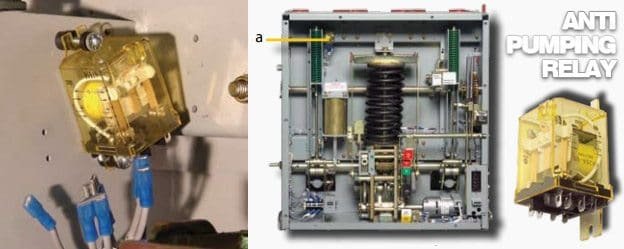What is an Earth Leakage Circuit Breaker ELCB is a safety device used in electrical installations with high Earth impedance to prevent shock by detecting and interrupting the circuit upon detecting stray voltages. It is essential for protecting against electrical shocks and faults.
ELCBs are employed in various applications to ensure safety and prevent electrical fires. These devices are designed to automatically shut off the power when leakage current or dangerous voltages are detected. By providing electrical shock protection and effectively preventing fires caused by current leakages in control panels, ELCBs play a crucial role in ensuring electrical safety in different settings.
Whether in homes, commercial properties, or industrial environments, ELCBs are a vital component of electrical safety measures.
Introduction To ELCB
An Earth Leakage Circuit Breaker (ELCB) is a safety device designed to protect against electrical shock and fires caused by short circuits or overloads. It is used in electrical installations with high Earth impedance to prevent dangerous voltages on metal enclosures of electrical equipment. When small stray voltages are detected, the ELCB interrupts the circuit, providing automatic shut-off when leakage is detected. Unlike a standard circuit breaker, an ELCB is voltage operated and relies on the voltage developed on its coil during a fault current flow. Ground-fault circuit interrupters (GFCIs), also known as residual-current circuit breakers, serve a similar purpose, sensing leakage current and automatically interrupting the circuit to prevent accidents. The main function of an ELCB is to provide electrical shock protection and prevent fires from leakage current in low voltage AC circuits.
What is an Earth Leakage Circuit Breaker ELCB
An ELCB protects against electric shock by detecting small leakage currents flowing to earth. When leakage exceeds a preset limit (typically 30mA), the ELCB trips, cutting off power to the circuit. This prevents potentially fatal shocks.
How ELCB Works
An Earth Leakage Circuit Breaker (ELCB) is a safety device used in electrical installations with high Earth impedance to prevent shock. It detects small stray voltages on the metal enclosures of electrical equipment and interrupts the circuit if a dangerous voltage is detected. ELCBs are used to prevent electrical shock and fires caused by short circuits or overloads, providing automatic shut-off when leakage is detected.
Types Of ELCB
There are two main types of Earth Leakage Circuit Breakers (ELCBs):
Voltage Operated ELCB:
- This type of ELCB uses a voltage transformer to compare the voltage between the live and neutral conductors.
- If there is a leakage current to earth, the voltage difference will cause the transformer to induce a current in the secondary winding, which trips the circuit breaker.
- Voltage operated ELCBs are less common than current operated ELCBs because they are less sensitive and more prone to nuisance tripping.
Current Operated ELCB (RCCB):
- This type of ELCB uses a current transformer to compare the current in the live and neutral conductors.
- If there is a leakage current to earth, the difference in current between the live and neutral conductors will cause the transformer to induce a current in the secondary winding, which trips the circuit breaker.
- Current operated ELCBs are more sensitive and less prone to nuisance tripping than voltage operated ELCBs. They are the most common type of ELCB used today.
Classified by the number of poles
In addition to these two main types, ELCBs can also be classified by the number of poles they have:
- Single-pole ELCBs: These ELCBs are used for single-phase circuits.
- Double-pole ELCBs: These ELCBs are used for two-phase circuits.
- Three-pole ELCBs: These ELCBs are used for three-phase circuits
FAQ’s
What is difference between ELCB and RCCB?
RCCB detects any imbalance between line and neutral currents, regardless of earth leakage. It’s more versatile, but requires proper earthing. ELCB only detects earth leakage currents and works even with poor earthing, but is less sensitive to other types of faults.
What is ELCB and MCB?
MCB protects against overcurrent or short circuits, not leakage. It won’t prevent shocks from faulty appliances.
What is ELCB and how it works?
ELCB compares the current in the live and neutral conductors. Any leakage to earth creates an imbalance, triggering the tripping mechanism.
Can ELCB replace MCB?
No, ELCB provides different protection and cannot replace MCB. Both should be used in series for complete protection.
Does ELCB need earth?
Yes, ELCB relies on a good earth connection to function properly.
Can MCB protect from earth leakage?
No, MCB protects against overcurrent and short circuits, not leakage currents.
Can we use RCCB in place of ELCB?
Yes, RCCB offers broader protection and works even with poor earthing.
What is better than RCCB?
There’s no “better” option. Both have advantages depending on the situation. Use RCCB for most cases, ELCB only if earthing is unreliable.
Can RCCB work without earthing?
No, it won’t function properly without a good earth connection.
Is RCCB better than MCB?
RCCB protects against shock, MCB protects against overcurrent. Both are needed for complete safety.
Which is best ELCB or RCCB?
RCCB is preferred for its versatility and sensitivity to various faults. ELCB is less sensitive but works in situations with poor earthing.
Why ELCB is replaced by the RCCB?
RCCB offers more comprehensive protection and works consistently under diverse conditions.
What are the disadvantages of RCCB?
Requires proper earthing and can trip unnecessarily for transient currents like appliance switching.
Can I use RCCB in home?
Yes, RCCB is recommended for home electrical safety.







